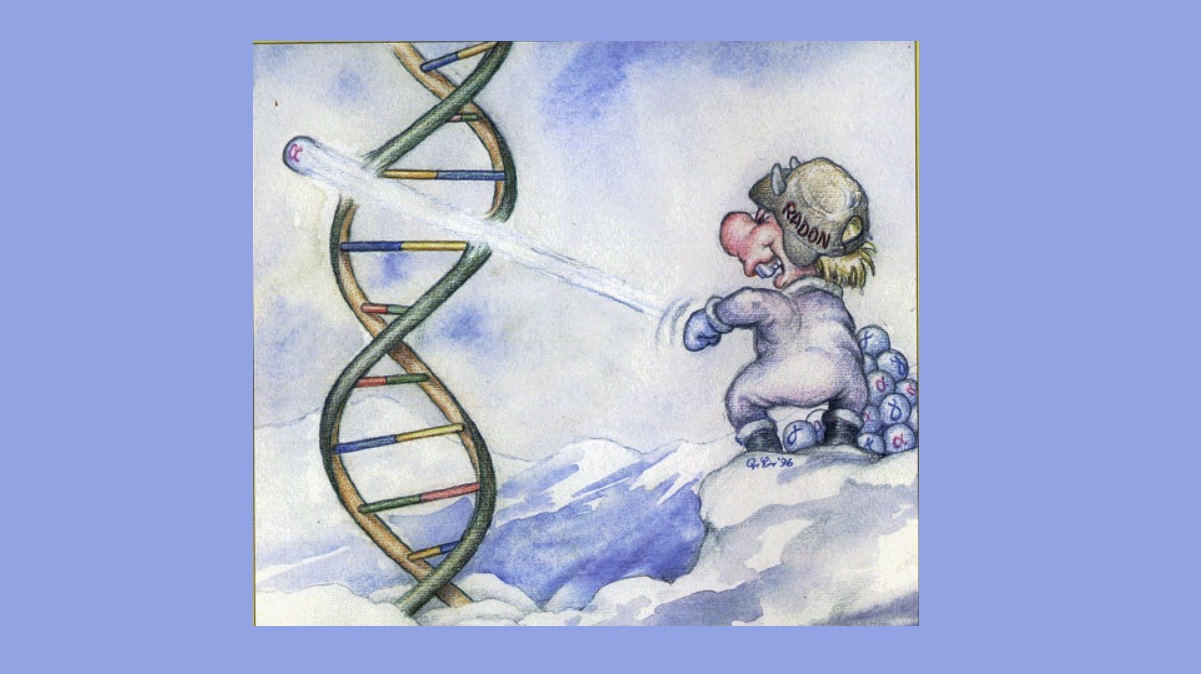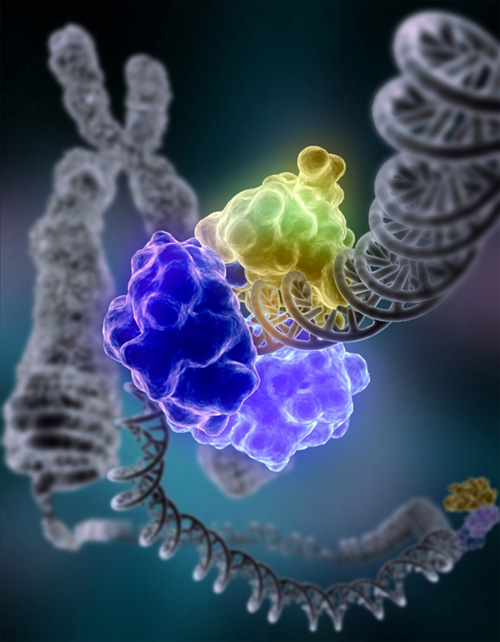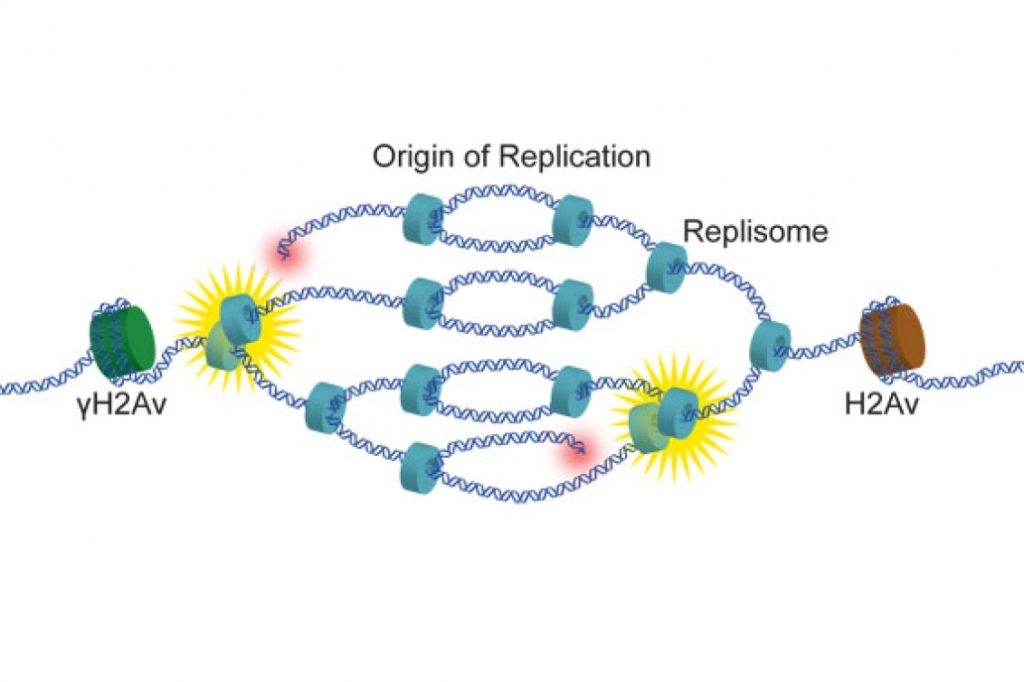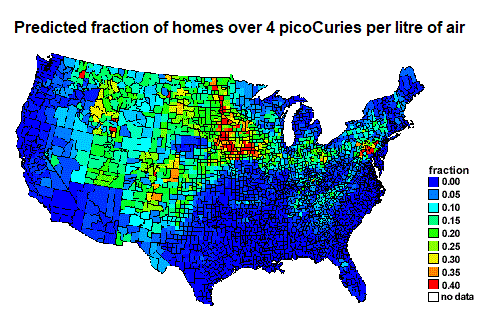Near the end of the 20th century, researchers at the Massachusetts Institute of Technology (MIT) discovered that DNA strands can break and repair about 10,000 times per day per cell, (this is not a typo), and that a 100 mSv per year dose increases the number of breaks by only 12 per day.

“… MIT discovered that DNA strands can break and repair about 10,000 times per day per cell, (this is not a typo), and that a 100 mSv per year dose increases the number of breaks by only 12 per day.“
In addition, the majority of DNA breaks are caused by ionised oxygen atoms from the normal metabolism that constantly occurs within our cells. And because DNA is a double helix, the duplicate information in the other strand lets enzymes easily repair single strand breaks. In fact, our cells have been repairing DNA breaks since forever, and they have become extremely good at it.

DNA damage, due to environmental factors and normal metabolic processes inside the cell, occurs at a rate of 1,000 to 1,000,000 molecular lesions per cell per day. A special enzyme, DNA ligase (shown here in color), encircles the double helix to repair a broken strand of DNA. DNA ligase is responsible for repairing the millions of DNA breaks generated during the normal course of a cell’s life.
Adaptive Response – The vaccination effect called Hormesis
Dr. Alex Cannara explains it this way:
“Radiation from unstable isotopes is always decreasing. That’s what the ‘half-life’ for an isotope expresses. Going back in time is going back to much higher radiation environments – 8 times more for U-235 when photosynthesis began to make oxygen common in air, and oxidation made elements like Uranium soluble in water. Living things were, back then, even more intimately in contact with radioactive isotopes.
“So how did life survive higher radiation, and how did it survive the increasing oxygen atmosphere, which corrodes life’s hydrocarbons into CO2 and water?
“The answer is simple: Nature evolved repair mechanisms. Each cell repairs proteins or digests badly malformed cells. Each cell repairs genetic material before it’s copied for reproduction.
“A DNA or protein molecule, or one of the many repair molecules in our cells, doesn’t know if a bond has been broken by an oxidizing radical, an alpha particle, or a microbial secretion. Our cellular-repair systems have evolved to fix defects regardless of cause. Thus, Nature has, for billions of years, been able to deal with chemical and radiation threats. Today, chemical threats have increased because of industry, but radiation threats have decreased.
“Therefore, we should not be surprised by the absence of radiation deaths at Fukushima and the small death rates in and around Chernobyl.”
We have also learned that low dose irradiation of the torso is an effective treatment for malignant lymphomas. Fear of radon has been hyped by the EPA’s devotion to the LNT theory, and their efforts have greatly assisted those who sell and install radon-related equipment, whether needed or not. (Studies of every US county have revealed that those with low levels of radon actually had higher levels of lung cancer than counties with higher levels – where the incidence was lower!
But compare the two maps. The counties with less radon have more lung cancer deaths. EPA’s LNT theory is clearly wrong.
The EPA recommends remediation when radiation measures 4 picoCuries per litre of air, but an average adult is naturally radioactive at about 200,000 picoCuries. If the EPA knows this, and they should, why are they concerned about such low, natural radon levels?
The south eastern states had the lowest radon levels, but high cancer rates.
Climate Crowd Ignores a Scientific Fraud
Radon, lung cancer and the LNT model
This Radioactive Life, by Chris Patrick. Radiation is everywhere. The question is: How much?
Coming up next week, Episode 10 – Hormesis: How Radiation is Good for You
Links and References
1. Next Episode – Episode 10 – Hormesis: How Radiation is Good for You
2. Previous Episode – Episode 8 – More Beer, More Bananas
3. Launching the Unintended Consequences Series
4. Dr. George Erickson’s Website, Tundracub.com
5. The full pdf version of Unintended Consequences
6. https://en.wikipedia.org/wiki/DNA_ligase
7. https://en.wikipedia.org/wiki/Hormesis
8. https://wi.mit.edu/news/forks-colliding-how-dna-breaks-during-re-replication
9. https://www.epa.gov/
10. https://enews.lbl.gov/Science-Articles/Archive/radon-risk-website.html
11. https://www.researchgate.net/figure/Cancer-mortality-rates-lung-trachea-bronchus-and-pleura-by-state-economic-area_fig1_242164660
12. https://www.wsj.com/articles/climate-crowd-ignores-a-scientific-fraud-1460758426
13. https://www.mn.uio.no/fysikk/tjenester/kunnskap/straling/radon-and-lung-cancer.pdf
14. https://www.symmetrymagazine.org/article/this-radioactive-life
#GeorgeErickson #UnintendedConsequences #MoltenSaltFissionEnergy #Thorium #MoltenSaltFissionTechnology #DNARepair #Hormesis







2 Replies to “Episode 9 – Our Natural DNA Repair Capabilities – Unintended Consequences – Chapter 4 Part 1”